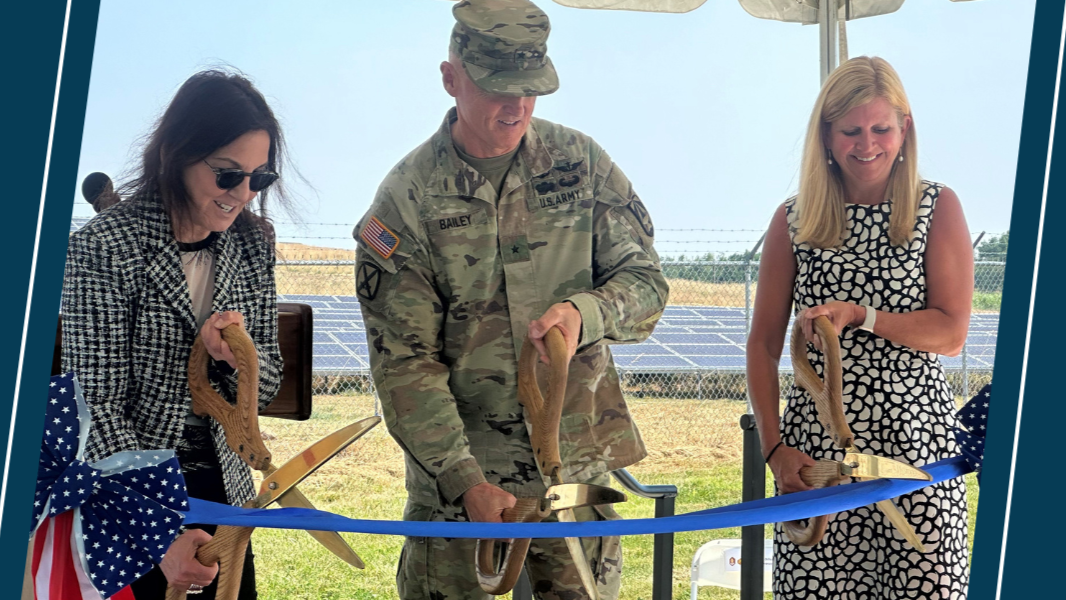January 6, 2026
In The Hill, Saul Elbein highlights how military bases are becoming testbeds for clean energy technology. Recognizing that bases are one of the nation’s largest single energy consumers,Ameresco has been working with the Federal government for over 20 years to upgrade energy infrastructure through distributed generation and renewable energy resources.
Reflecting on that time, we have continued to innovate and demonstrated how cleantech solutions deployed with Federal agencies can be a template for other markets. I think back to one of our early Federal projects in 2009 with the U.S. Department of Energy at the Savannah River Site in South Carolina, where we developed biomass-fueled cogeneration plants to replace coal powerhouses and oil-fired boilers from the 1950s—marking the largest efficiency projects in the Federal government’s history at that time.
More recently deployed projects, such as the floating solar power plant at Fort Liberty in NC and the microgrid with islanding capability at Portsmouth Naval Shipyard in ME, continue to showcase scalable and adaptable energy solutions. These can guide civilian organizations, municipalities, institutions, and businesses in achieving their own energy efficiency and sustainability goals.
Last month, we celebrated the completion of another project with the US Army. Our advanced renewable energy system at Fort Detrick came online, in support of the base’s critical operations, sustainability, and energy independence. The integrated system adds battery storage to existing solar resources that we installed at the base and have been operational since 2016. The garrison in Maryland will consume all electricity supplied by the integrated 6 MW / 6 MWh battery energy storage system and 18.6 MW solar energy facility, reducing annual CO2 emissions by approximately 19,000 metric tons. But most importantly, it provides resiliency to the base for its critical needs.
This initiative is more than just an energy upgrade; it’s a collaborative effort benefiting the Army, local Maryland communities, and many other stakeholders. We’re proud to support Fort Detrick’s energy security and sustainability efforts as they focus on mission continuity. Our sincere thanks go to the Honorable Rachel Jacobson, Brigadier General Edward H. Bailey, and our dedicated team for their steadfast support and leadership in bringing this project to life. Find out more about the recent event to commemorate this achievement here.
The integration of this BESS at Fort Detrick showcases the power of partnerships in driving innovation associated with emerging technologies. This project aligns with the United States Department of Defense‘s vision for sustainable and resilient energy solutions, which are crucial for national security and the wider adoption of renewable energy in the civilian market. Read more from The Hill article here.
We’re excited to be a pioneer in leading these advancements, delivering solutions that are innovative, reliable, vendor-neutral, and support the goals of our customers. More importantly, we’re proud to be long-term partners with customers dedicated to taking action towards their goals – military and civilian alike.
# Originally published on LinkedIn. #
The Rise of Clean Energy Microgrids
This free informational resource details why clean energy microgrids make sense for healthcare, higher education, government, businesses and more. All microgrids offer greater electric reliability. But the clean energy microgrid does more. It also reduces carbon emissions and helps organizations reach sustainability goals – an achievement increasingly valued by the healthcare community, business customers, government constituents, and college students, parents and donors.


